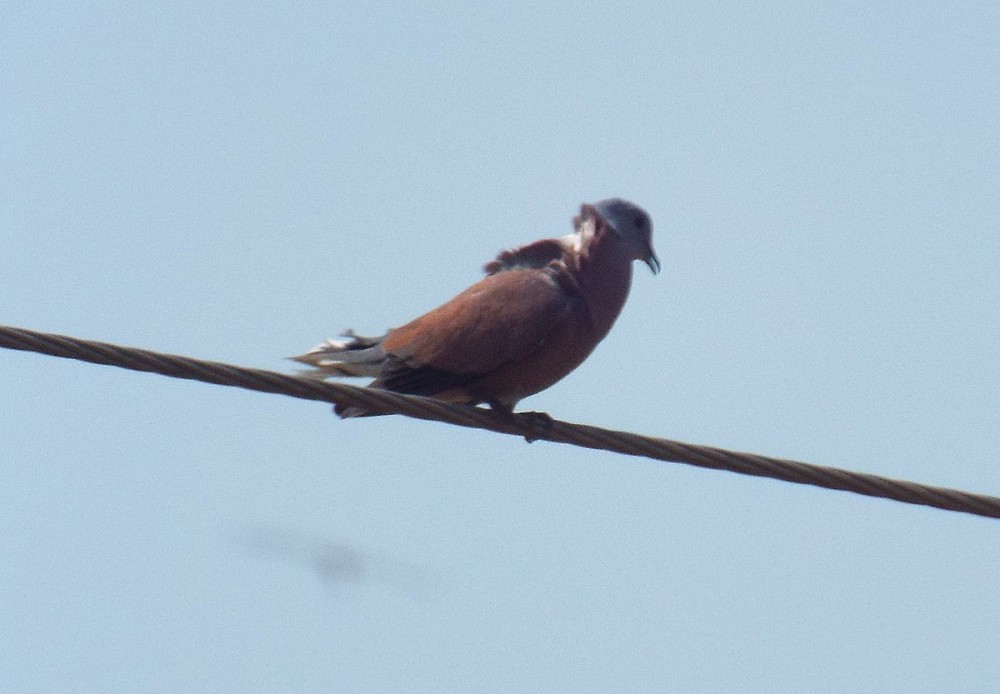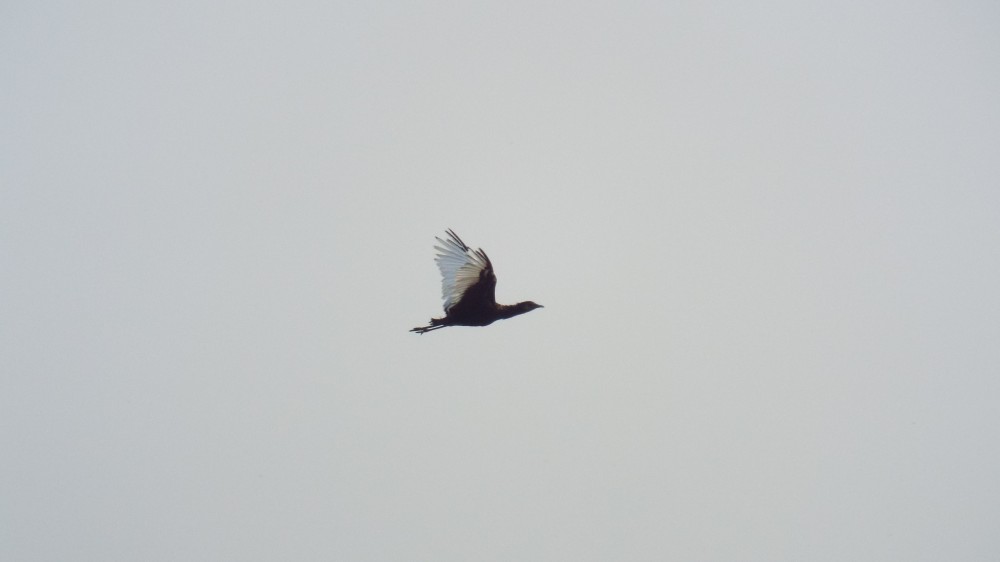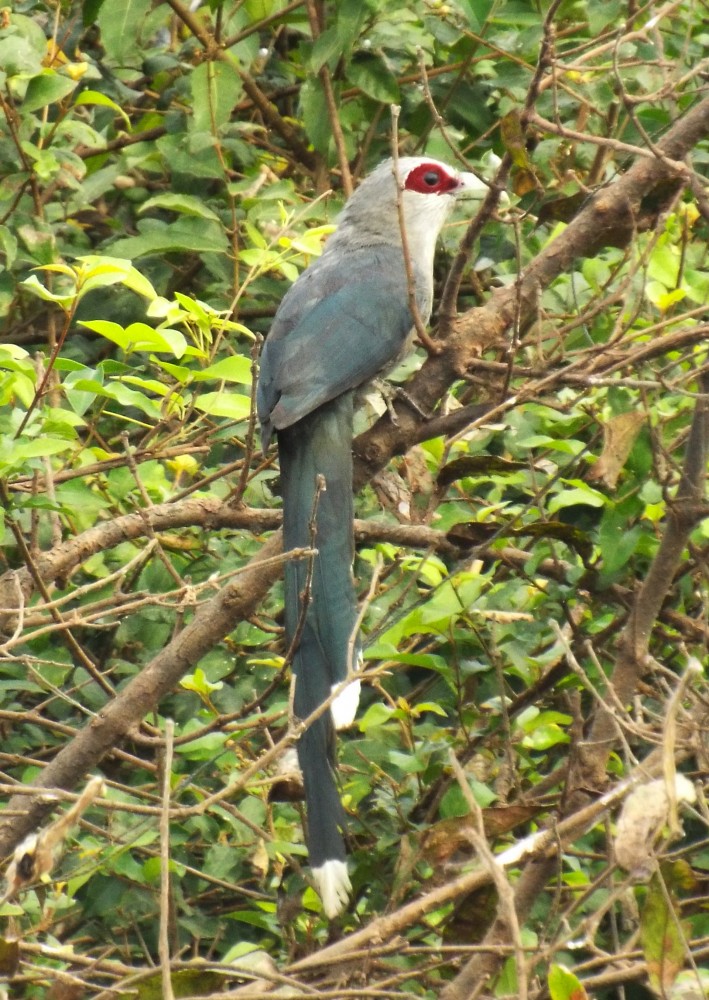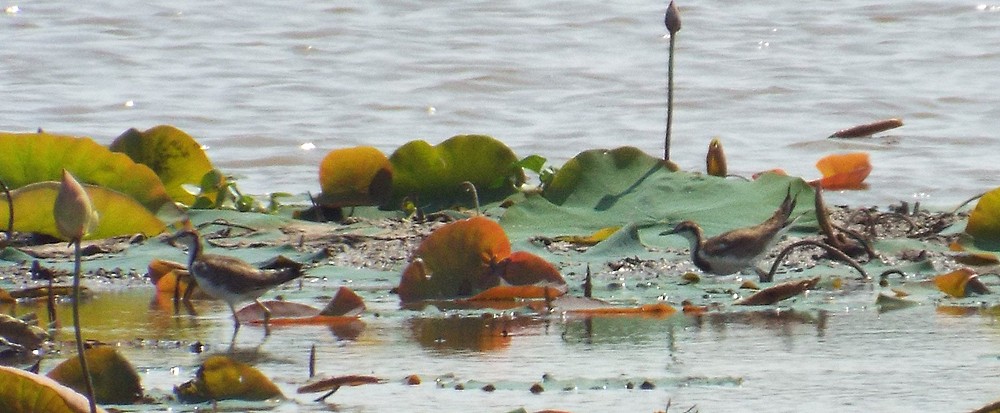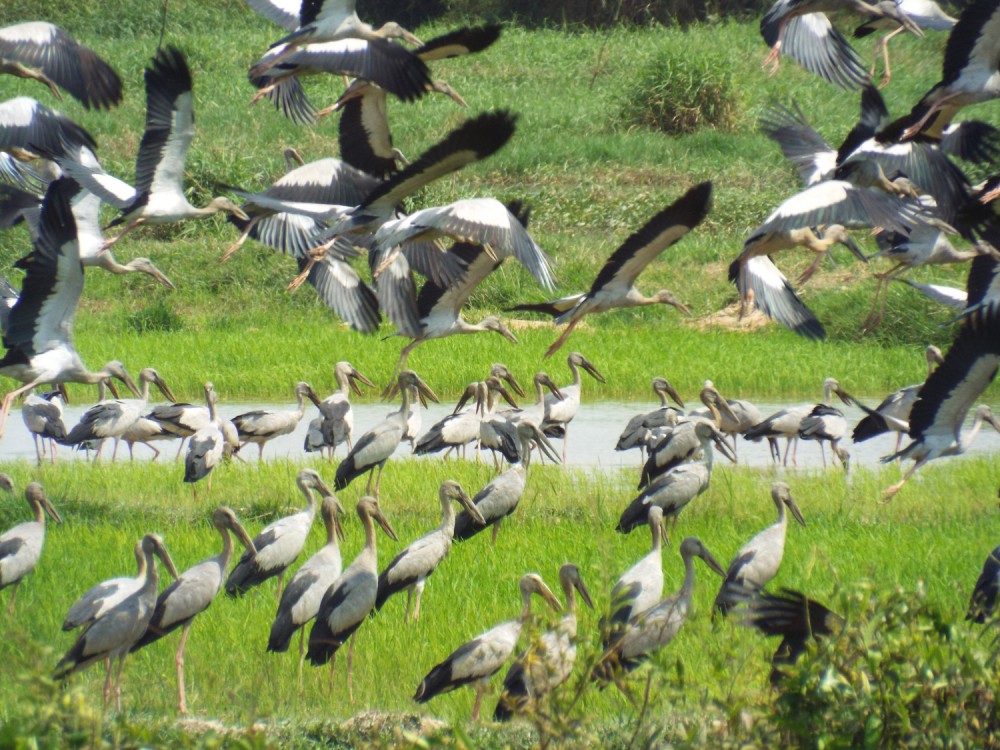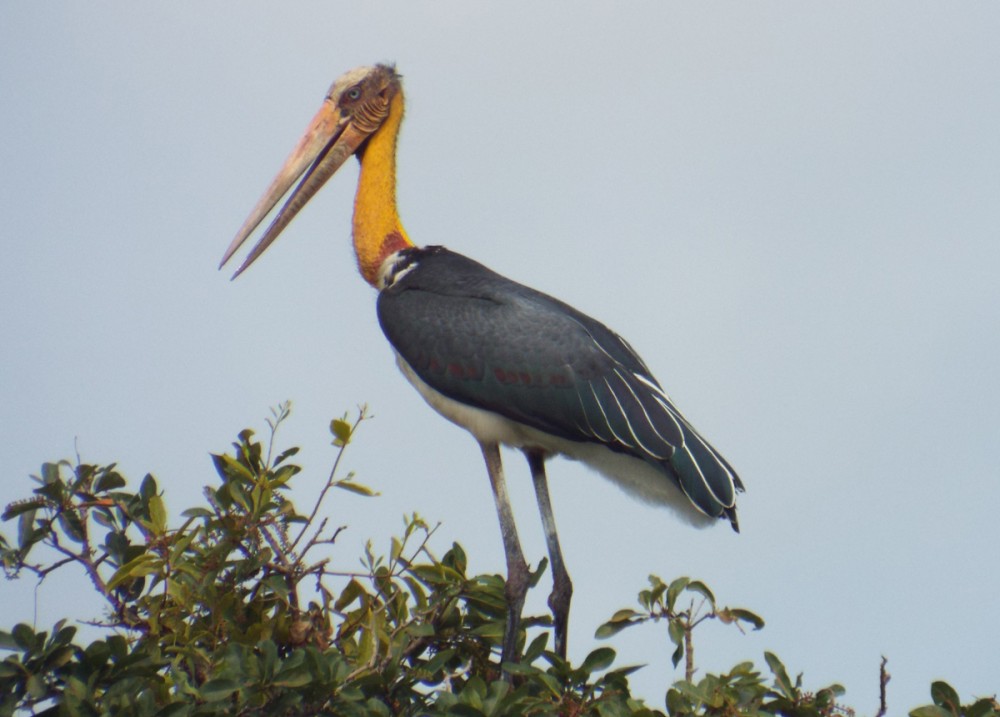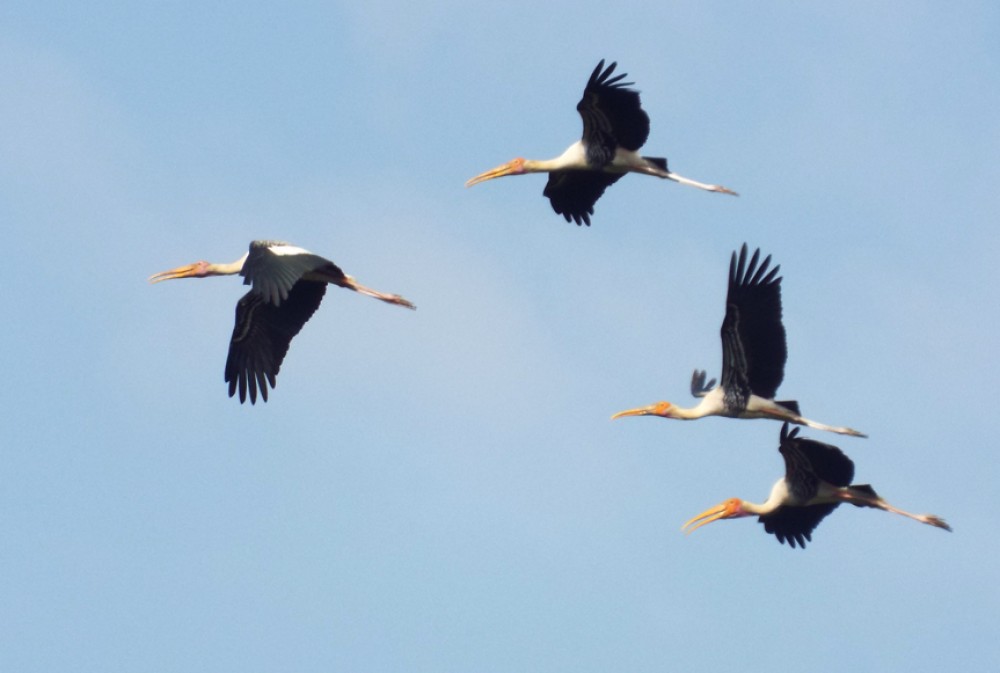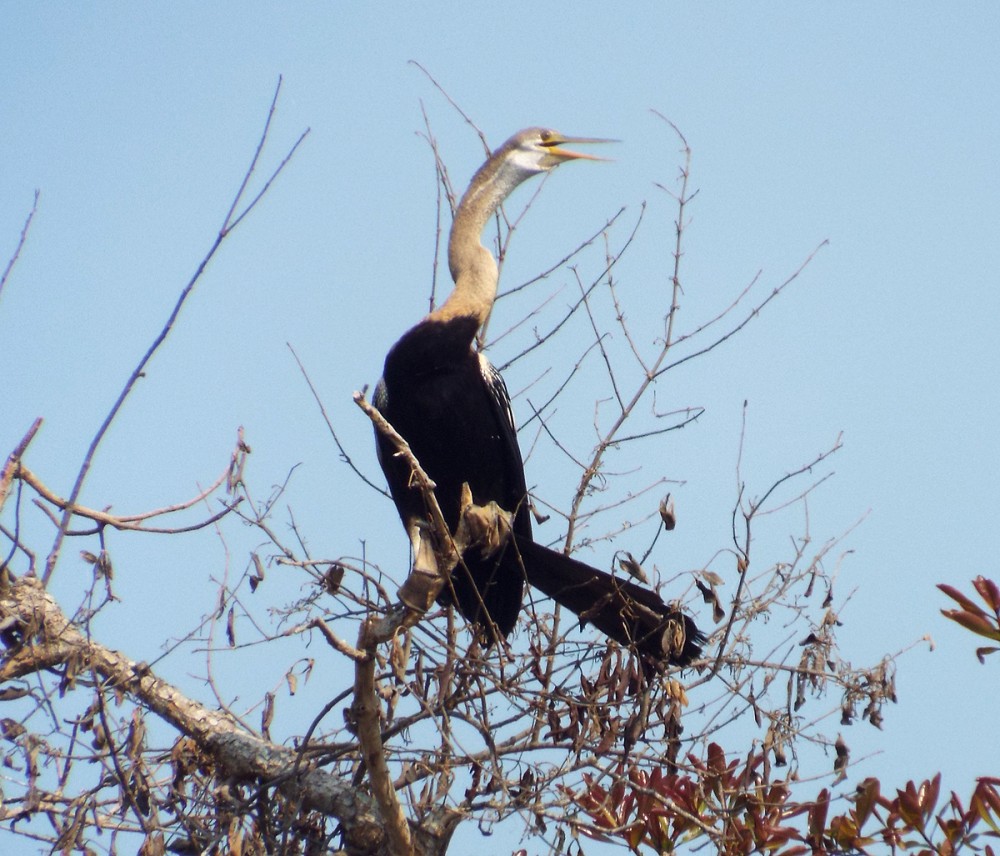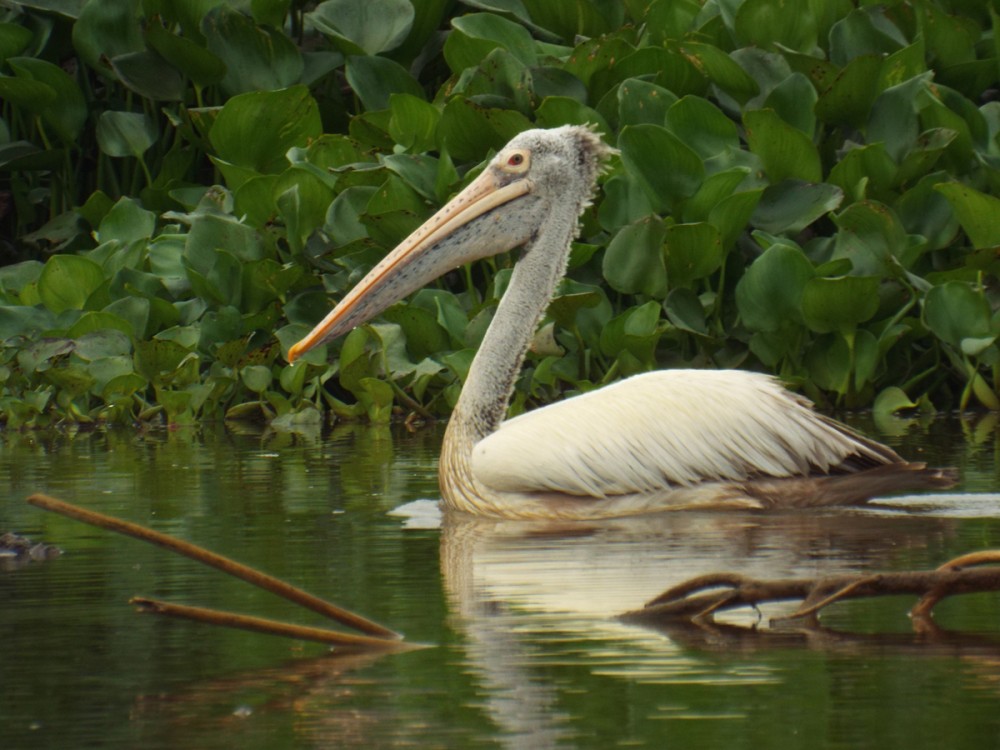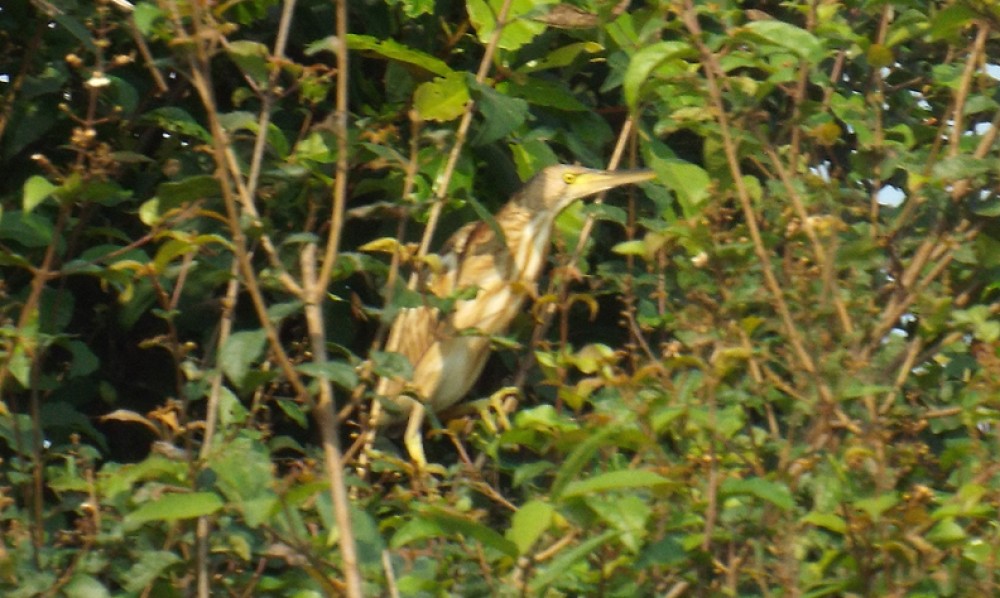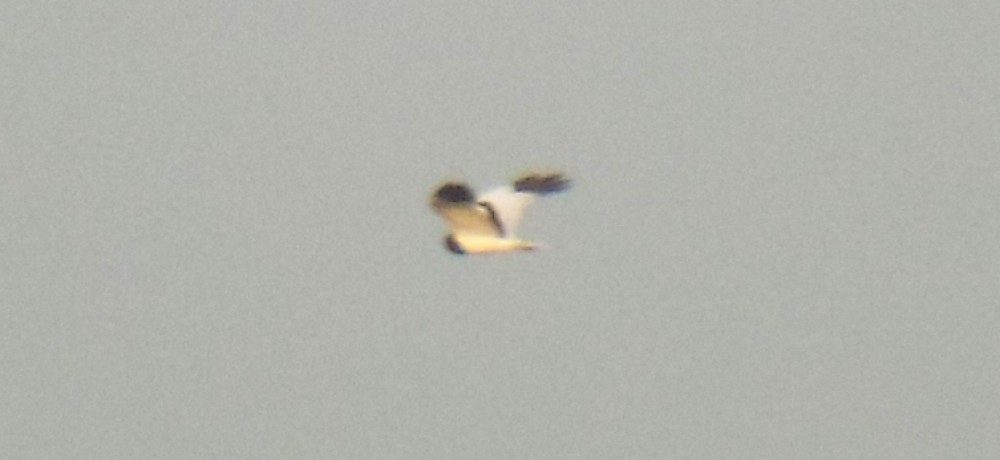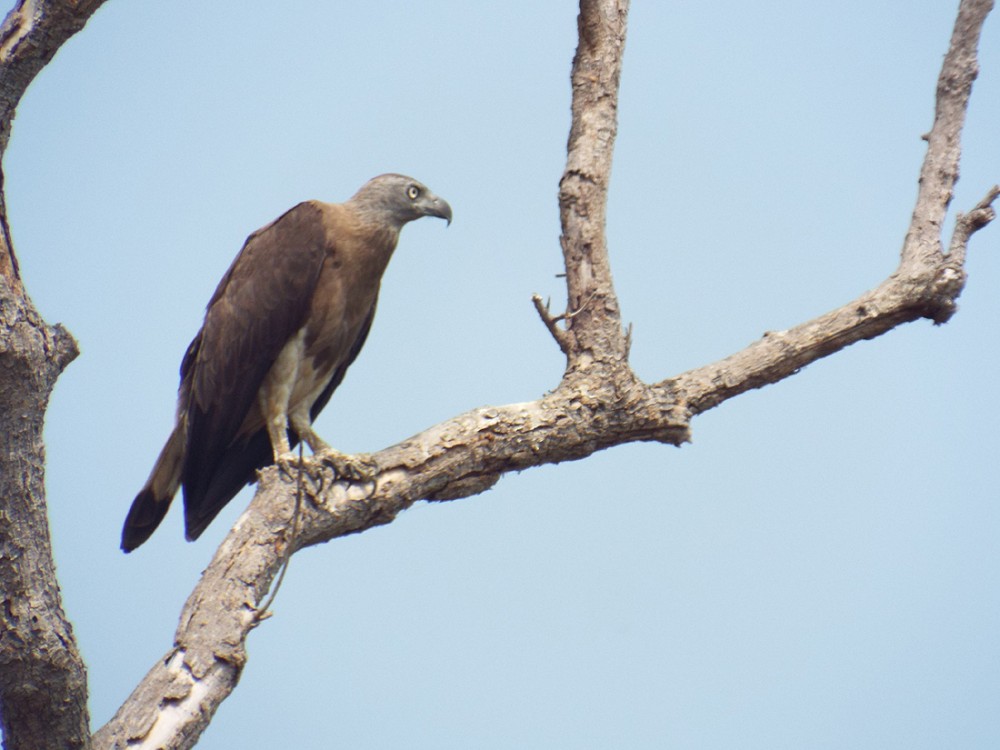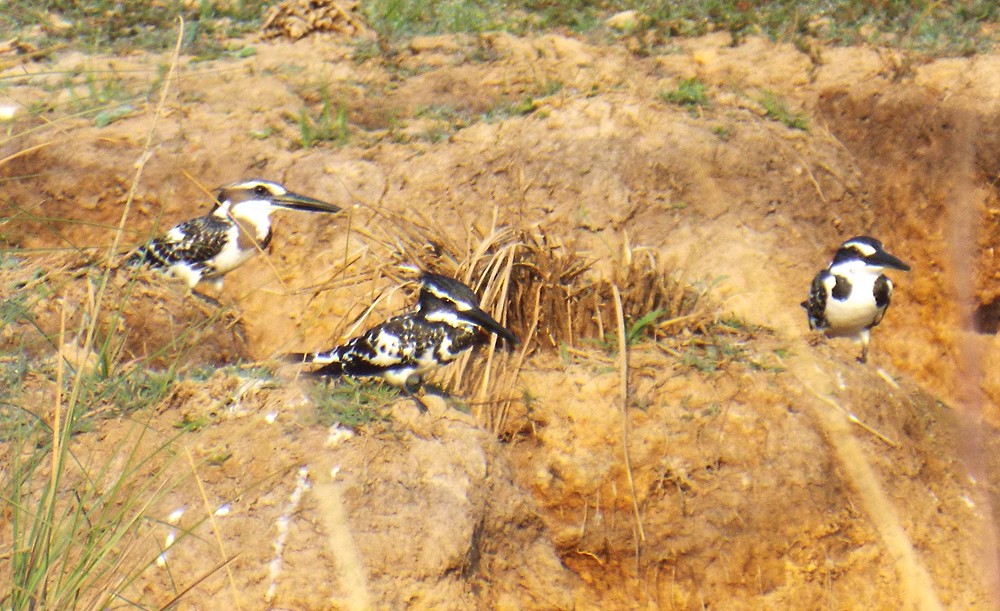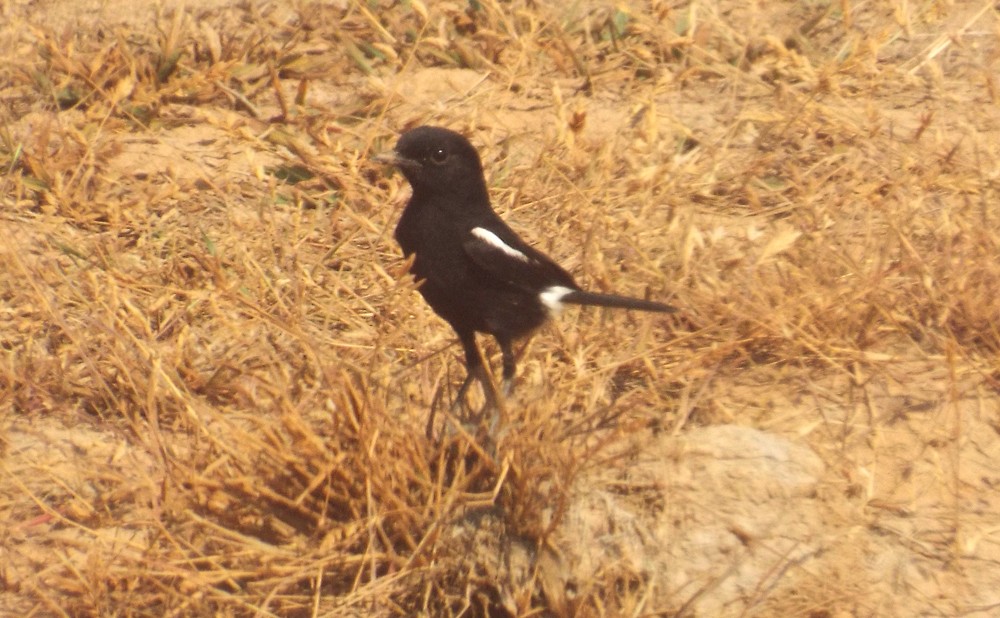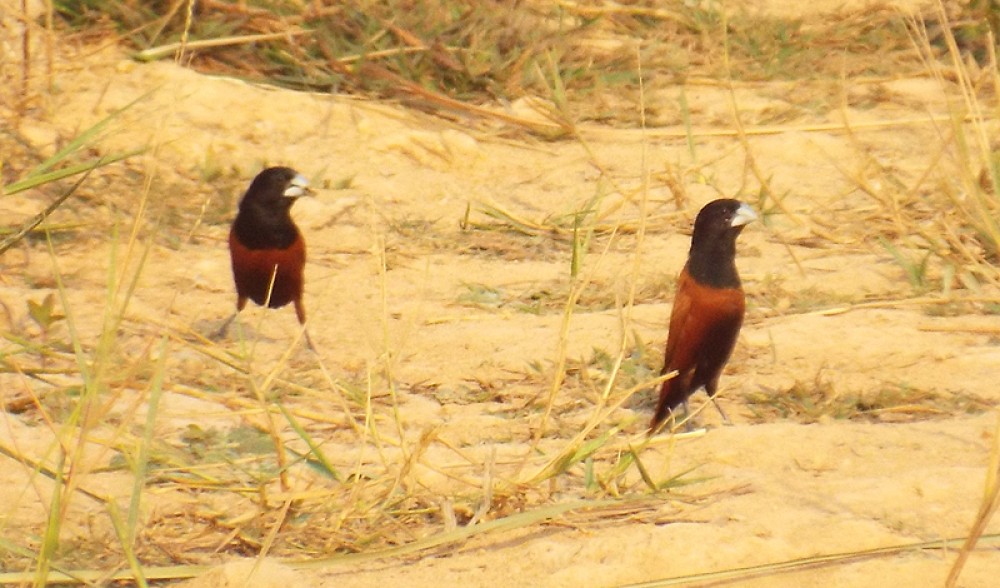Siem Reap, Cambodia - February 2019
15 February 2019 – 21 February 2019
This wasn't a dedicated birding trip - only 5 days, only two of which were dedicated to birding, and yet even in that and sticking near the tourist hub that is Siem Reap, Cambodia has some fantastic birding to offer. While Angkor Wat is always going to be the headliner of visits, and rightfully so, within a few hours of Siem Reap can be found some of the most spectacular birding of South East Asia as well as a large number of globally endangered species.
As this was a trip on a budget, I had selected two of the cheaper options to be guided to, and even with that was able to see some truely stunning species.
Visited Sites
General Travelling Information
Cambodia is a decidedly poor country, largely as a result of the atrocities of the Khmer Rouge regime and imposition from various colonial powers. As a result of this, the basic cost of spending time in Cambodia is very cheap by Western standards.
Money: It uses a perculiar hybrid currency system where US dollars (notes only) is used for larger transactions, and their own currency is used for smaller ones at the odd rate of 4020 riel = $1. My research beforehand suggested that only crisp pristine $US notes would be accepted, but even with a few of only average condition we ended up with, no one complained. This is probably more an issue for US visitors who are more likely to be taking their own battered money, rather than the clean bills you usually get from a currency exchange.
Transport: Tuck-tuck drivers are ubiquitous and by far the easiest way to get around within cities like Siem Reap. I would recommend two things: first that you go with your hotels recommended drivers where possible as that gives them a bit of accountability, and secondly pre-agree on prices for journeys before you set off. I would also say that if you are asking a tuck-tuck driver to take you round for the entire day, it's not obligatory but nice to tip them; given for how little they work even one or two dollars or your spare riel is an amount of money that will be worth a lot more to them than you.
Food: Food is similarly very cheap, and even fairly fancy meals are going to be a lot cheaper than the UK. One of the most expensive meals we had was at Bug Cafe in Siem Reap (definitely an experience I'd recommend for those who feel up to it) and even that probably came to under £20 for the two of us including drinks. Smaller establishments on the street side can be only a few dollars.
Water: One thing to remember: carry bottled water/drinks with you always. You will need to drink a lot, and the water isn't necessarily safe to drink. When going on trips, the driver and/or guide always provided some water for us, but we took our own too and generally went through most or all of both.
Angkor Wat will probably be on the agenda for most people, and it worked out $37 each for a day pass. This was in addition to the price of our tuk-tuck driver. The price we paid at our hotel was $15 for the day trip, plus an extra $10 to get there for dawn. We went for the East gate for a quieter visit start - you lose the iconic view but get exclusive first exploration time in a near empty World Heritage Site, and I definitely endorse that as a choice, though, be smarter than us and bring a torch! You'll have to walk from the tuk-tuk stop to the temple! Getting there for dawn might help rack up a bit more wildlife; once the crowds pour in it will begin to get more scarce.
Recommended Literature
As I like to travel light, I only took one book with me; Birds of Vietnam, Cambodia and Laos by Peter Davidson. It's very much a pocket book rather than an exhaustive reference guide - but did help out when discussing stuff with guides and identifying some of the common species that I hadn't pre-researched.
Acknowledgements
For Prek Toal, we went with Cambodia Travel Trails after a recommendation and proved the best price and most responsive in enquiries (to be fair, I ask a lot of questions and am probably fairly annoying to correspond with). But note that that price doesn't include the reserve admission ticket or lunch, but even with these included it still was cheaper than other options and did include car journeys, boat trip and guide. The lunch was REALLY good, and though simple, probably one of my favourites of the entire trip, and supports a poor community. A plus was also that we paid in person, which saved on expensive international transfer fees. Our guide was excellent, knowledgeable and enthusiastic.
For the Florican Reserve/Phnom Krom Trip, we went with Cambodia Bird Guide Association. It was the most expensive guided trip I've had, and worked out in the region of £270 plus international transfer fees of around £30 for a total of £300. But that being said, given the skill of our guides in identifying species, and the fact we had a separate driver too, and were very responsive to my target list, definitely worth the money.
I strongly encourage tipping - it will definitely be appreciated, and especially with assistant guides at the Florican Reserve who helped spotting, it's definitely important.
Diary
15 February 2019: Arrival
We flew into Siem Reap airport from Singapore early in the afternoon after... lets say... a painful experience of queueing at customs of Siem Reap airport. I REALY REALLY strongly suggest that you get an e-visa for Cambodia, the queues at the airport are really long and really slow, and having an e-visa would allow you to skip the first one. It's only about $7US different anyway.
It then also turned out that our hotel had got mixed up in our airport shuttle and so we had to get a taxi (despite me messaging them specifically to avoid this scenario) and by the time we got to the hotel we were too tired to do much than stumble around the area looking for somewhere for dinner.
What our hotel did provide that was excellent was they had specific tuc-tuc drivers on registry and specific prices for different day trips. We wanted to do the "small circuit" of Angkor Wat on the first day, which would be $15, plus an extra $10 for getting there early.
At this point, let's get the standard fare out of the way:
The common birds of Siem Reap were afairly limited, but we did see some of the common species of the area, with the following being the regular urban species:
Tree Sparrow, Asian Palm Swift, Germain's swiftlet, Yellow-vented Bulbul, Black-naped Oriole, Oriental Magpie Robin
16 February 2019: Angkor Wat and Angkor Thom
There are bird guides available for Angkor Wat, but really the day was about the architecture, history and cool overgrown trees with birds as a bonus feature, so we just went with the tuc-tuc driver provided. We asked to go to the East gate on account of the West gate being apparently heaving with people for dawn, trying to get a great shot, so we were dropepd off there, but because we had forgotten to bring a decent torch, ended up walking through the night and ended up at the North Gate which we had entirely to ourselves - just us sitting seeing the sun come up with only the occassional other person passing by. Also, because the North Gate is a lot closer than the West, it also meant that we were one of the first people to get inside the complex.
You don't really go to Angkor Wat for birding, but Blue Rock Thrush and Common Mynah are common amongst the buildings and plenty of swifts overhead (I'd resolved not to spend too much time investigating swifts this holiday because of how time intensive it can be to ID things, and I didn't manage to pick out any needletails which would have been the main highlight.)
What you can also do however is from the outer sections of the wall, view the treeline for species, which netted me a few lifers; Black Baza, Hair-crested Drongo and a Greater Raquet-tailed Drongo I didn't get a photo of, plus a brief view of two very large birds that were probably storks or pelicans. Additionally, some mammals were present in the environs - Long-tailed Macaque out the front, Variable Squirrel in the surrounding trees and some Theobald's Tomb Bat in colonies within Angkor Wat itself.
As we headed back to the tuc-tuc, there were a pair of Dollarbird above where our tuc-tuc was waiting. There were also one or two smaller birds in the undergrowth, but I failed to pick them out enough to identify them.
We then headed on to the Angkor Thom section, which is more fragmentory and forested. First stop was Bayon, which sits in the middle of it - and crowds of tourists aside, I actually found the most visually compelling of the temples. There wasn't much birding here beyond regular Shikra and occassional drongos and parakeets flying over briefly, but not long enough to identify. Bat species could be heard in the temple, but unlike at Angkor Wat itself, not actually spotted, though loads of dragonflies were overhead.
We then looped round on our own walk, and visited Baphuon (which provided me with a couple of Ashy Mivet) and more Shikra, followed by Phimeanakas, the Terrace of the Elephants and the edge of the Terrace of the Leper King. I did get birds overhead, but I was now reminded why birding in tropical forest is hard work, especially when splitting your time with some major historical stuff.
We stopped for lunch opposite Ta Keo before continuing on to Ta Prohm which proved to be simultaneously the most birdy and highest tourist density of the big name temples. I picked up Asian Brown Flycatcher, Streak-eared Bulbul, Common Hill Mynah, Red Breasted Parakeet and Alexandrine Parakeet, mostly from the perimeter of the temple - the parakeets particularly being unavoidable as they have a colony directly overhead.
We ended up bailing as the coach tour groups just made it too busy, but our tuc-tuc driver then took us to Banteay Kdei as a final stop, which was much quieter save for cicadas. There were birds about, but as it was hot and we were tired by this point, I didn't really stop around to pick them out as much as I might have on other day, but I did get a nice Grey-headed Canary Flycatcher plus a nice Yellow-striped Tree skink.
After that we headed back to the hotel and basically crashed after a long and hot day.
17 February 2019: Siem Reap
The next day we went around Siem Reap a bit as a less intensive day. I woke up a bit early, and so decided to sit watching the trees outside our window and picked up a few lifers: Dusky Warbler, Yellow-browed Warbler and Black Drongo.
Not much in the way of notable wildlife, except the Lyle's Flying Fox Colony at the Royal Gardens, which is worth a visit - particularly if you've never seen fruit bats before.
This was a more general tourist day, but we had a pretty good time - we did Artisans Angkor, which is a shop that houses/supports local poor crafts people, several of the markets, pub street and went to "Bugs Cafe" which served, unsurprisingly, invertibrates. Worth a go if you aren't too squeamish! In the evening we went to Phare the Cambodian Circus which was a really great choice and I'd also recommend.
18 February 2019: Prek Toal
The first (essentially) dedicated bird day of three on the overall trip, we were to do a day trip consisting of a morning trip birdwatching, followed by a trip around the floating village in the afternoon. We had hired a guide with Cambodia Travel Trails after a recommendation on these forums - our guide, Sophoan Rath was excellent, picking us up early and warm and informative throughout, he was also the best value and most reliably responding person to offer this tour, so would definitely recommend him.
A tour of Prek Toal at this time of the year essentially consists of getting in a boat with your guide and a ranger and travelling through the channels, seeing what you can spot. We did also go up a tower at the end to view the nesting colony, but most of the closest views were had from the boat.
Prek Toal is definitely a destination about seeing a comparatively small range of species, but they are largely BIG species and seen in huge quantities. I probably saw more individual birds on this morning than any other birding trip of my life. Rather than listing individually sightings in order, a general gist is as follows. Counts are vague because trying to tally them all would be an exercise in madness.
Despite the vast number of birds seen, we did dip two of the star attractions - Greater Adjutant and Milky Stork, bother of which are rare breeders here. That being said, the numbers of birds seen was so vast that we may well have had them in our field of view and just not been able to pick them out from the thousands of birds.
19 February 2019: War Museum and Killing Fields
There are few places in the world where a single piece of recent history is so utterly defining as the Khmer Rouge era of Cambodia is. Me giving a second hand report is not going to do the narrative justice, and so I do strongly recommend visiting some cites connected to it to learn about this tragic episode of human history. We visited the War Museum and a site of the killing fields in the morning, and then on the opposite end of human experience, watched a Buddhist festival parade in the afternoon that we stumbled upon.
We got back early for our guide for the next day to drop in and have a chat about exact plans for the following day including how we wanted to balance specific target focus vs. getting a bigger list, and the odds on the various targets I had. A much appreciated service that helped know what the expectations would be!
The only lifer of the day wasn't a bird at all, but a reptile, a Common Sun Skink in the leaf litter at the War Museum.
20 February 2019: Florican Grasslands and Phnom Krom
had booked a full day tour with the Cambodia Bird Guide Association in two parts, morning would be the Florican Grasslands with Bengal Florican and Sarus Crane being the prime targets with a number of secondary species I'd like to see but wasn't specifically bothered about investing time into if they didn't turn up on their own. Our guide had told us he'd spoken to the locals and unfortunately odds on the Sarus were probably poor, but Florican should be fine.
We got that 5am pick up by our guide and driver and were driven for about an hour and a half to the site of the Floricans, and saw a lot of birds, although largely fairly distantly. We were successful in seeing a Florican fairly easily with help from local assistant guides, but the Sarus cranes elluded us. Not to be underestimated though is the supporting cast which included such stunning species as Pied Harrier, Pied Kingfisher, Red Avadavat and Asian wooly-necked Stork.
Additionally, as we returned to Siem Reap for lunch before heading on to part 2, I had mentioned that I'd like to see Indian/Indochinese Roller, and our guide and driver happened to spot some along the road back. As a bonus, as we stopped to watch them, they also picked up a Plain-backed Sparrow, another lifer.
Phnom Krom
When I'd been in early discussions with Cambodia Bird Guide Association they had suggested tacking this as an extra on in the afternoon for some negligible extra fee (might have been something like $20 even) and I'm really glad I took them up on it. A nice contrast to the places we'd been so far - the wetlands here are lotus filled fields well stocked with some great birds, including a number of waders like Jacana and stunning scenery, all a short drive from Siem Reap. I did dip on Siberian Rubythroat, which had been a target for the day, but a stunning close up viw of a huge flock of Asian Openbills was well worth it.
Species List
-
 Indian Spot-billed Duck
Anas poecilorhyncha
details
sounds
Indian Spot-billed Duck
Anas poecilorhyncha
details
sounds
-
Florican Grassland Reserve
-
-
 Little Grebe
Tachybaptus ruficollis
details
sounds
Little Grebe
Tachybaptus ruficollis
details
sounds
-
Phnom Krom Marshland
-
-
 Red Collared-Dove
Streptopelia tranquebarica
details
sounds
Red Collared-Dove
Streptopelia tranquebarica
details
sounds
-
 Spotted Dove
Spilopelia chinensis
details
sounds
Spotted Dove
Spilopelia chinensis
details
sounds
-
enroute
-
-
 Bengal Florican
Houbaropsis bengalensis
details
sounds
Bengal Florican
Houbaropsis bengalensis
details
sounds
-
 Greater Coucal
Centropus sinensis
details
sounds
Greater Coucal
Centropus sinensis
details
sounds
-
Prek Toal Bird Sanctuary
-
-
 Lesser Coucal
Centropus bengalensis
details
sounds
Lesser Coucal
Centropus bengalensis
details
sounds
-
Phnom Krom Marshland (heard only)
-
-
 Green-billed Malkoha
Phaenicophaeus tristis
details
sounds
Green-billed Malkoha
Phaenicophaeus tristis
details
sounds
-
 Germain's Swiftlet
Aerodramus germani
details
sounds
Germain's Swiftlet
Aerodramus germani
details
sounds
-
Angkor Wat and Angkor Thom
-
enroute
-
-
 Asian Palm Swift
Cypsiurus balasiensis
details
sounds
Asian Palm Swift
Cypsiurus balasiensis
details
sounds
-
Angkor Wat and Angkor Thom
-
enroute
-
-
 Black-winged Stilt
Himantopus himantopus
details
sounds
Black-winged Stilt
Himantopus himantopus
details
sounds
-
Phnom Krom Marshland
-
-
 Little Ringed Plover
Charadrius dubius
details
sounds
Little Ringed Plover
Charadrius dubius
details
sounds
-
Phnom Krom Marshland
-
-
 Pheasant-tailed Jacana
Hydrophasianus chirurgus
details
sounds
Pheasant-tailed Jacana
Hydrophasianus chirurgus
details
sounds
-
 Bronze-winged Jacana
Metopidius indicus
details
sounds
Bronze-winged Jacana
Metopidius indicus
details
sounds
-
Phnom Krom Marshland
-
-
 Pin-tailed Snipe
Gallinago stenura
details
sounds
Pin-tailed Snipe
Gallinago stenura
details
sounds
-
Phnom Krom Marshland
-
-
 Common Sandpiper
Actitis hypoleucos
details
sounds
Common Sandpiper
Actitis hypoleucos
details
sounds
-
Phnom Krom Marshland
-
-
 Wood Sandpiper
Tringa glareola
details
sounds
Wood Sandpiper
Tringa glareola
details
sounds
-
Phnom Krom Marshland
-
Florican Grassland Reserve
-
-
 Common Greenshank
Tringa nebularia
details
sounds
Common Greenshank
Tringa nebularia
details
sounds
-
Florican Grassland Reserve
-
-
 Oriental Pratincole
Glareola maldivarum
details
sounds
Oriental Pratincole
Glareola maldivarum
details
sounds
-
Phnom Krom Marshland
-
Florican Grassland Reserve
-
-
 Whiskered Tern
Chlidonias hybrida
details
sounds
Whiskered Tern
Chlidonias hybrida
details
sounds
-
Prek Toal Bird Sanctuary
-
Phnom Krom Marshland
-
-
 Asian Openbill
Anastomus oscitans
details
sounds
Asian Openbill
Anastomus oscitans
details
sounds
-
Prek Toal Bird Sanctuary
-
Phnom Krom Marshland
-
-
 Asian Woolly-necked Stork
Ciconia episcopus
details
sounds
Asian Woolly-necked Stork
Ciconia episcopus
details
sounds
-
Florican Grassland Reserve
-
-
 Lesser Adjutant
Leptoptilos javanicus
details
sounds
Lesser Adjutant
Leptoptilos javanicus
details
sounds
-
 Painted Stork
Mycteria leucocephala
details
sounds
Painted Stork
Mycteria leucocephala
details
sounds
-
Angkor Wat and Angkor Thom
-
Phnom Krom Marshland
-
Florican Grassland Reserve
-
-
 Oriental Darter
Anhinga melanogaster
details
sounds
Oriental Darter
Anhinga melanogaster
details
sounds
-
 Little Cormorant
Microcarbo niger
details
sounds
Little Cormorant
Microcarbo niger
details
sounds
-
Prek Toal Bird Sanctuary
-
-
 Great Cormorant
Phalacrocorax carbo
details
sounds
Great Cormorant
Phalacrocorax carbo
details
sounds
-
Prek Toal Bird Sanctuary
-
Phnom Krom Marshland
-
-
 Indian Cormorant
Phalacrocorax fuscicollis
details
sounds
Indian Cormorant
Phalacrocorax fuscicollis
details
sounds
-
Prek Toal Bird Sanctuary
-
-
 Spot-billed Pelican
Pelecanus philippensis
details
sounds
Spot-billed Pelican
Pelecanus philippensis
details
sounds
-
 Black Bittern
Ixobrychus flavicollis
details
sounds
Black Bittern
Ixobrychus flavicollis
details
sounds
-
Prek Toal Bird Sanctuary
-
-
 Cinnamon Bittern
Ixobrychus cinnamomeus
details
sounds
Cinnamon Bittern
Ixobrychus cinnamomeus
details
sounds
-
Prek Toal Bird Sanctuary
-
-
 Yellow Bittern
Ixobrychus sinensis
details
sounds
Yellow Bittern
Ixobrychus sinensis
details
sounds
-
 Black-crowned Night Heron
Nycticorax nycticorax
details
sounds
Black-crowned Night Heron
Nycticorax nycticorax
details
sounds
-
Prek Toal Bird Sanctuary
-
-
 Little Egret
Egretta garzetta
details
sounds
Little Egret
Egretta garzetta
details
sounds
-
Prek Toal Bird Sanctuary
-
Phnom Krom Marshland
-
-
 Chinese Pond-Heron
Ardeola bacchus
details
sounds
Chinese Pond-Heron
Ardeola bacchus
details
sounds
-
Prek Toal Bird Sanctuary
-
Phnom Krom Marshland
-
Florican Grassland Reserve
-
enroute
-
-
 Eastern Cattle Egret
Bubulcus coromandus
details
sounds
Eastern Cattle Egret
Bubulcus coromandus
details
sounds
-
Phnom Krom Marshland
-
-
 Great Egret
Ardea alba
details
sounds
Great Egret
Ardea alba
details
sounds
-
Prek Toal Bird Sanctuary
-
Florican Grassland Reserve
-
-
 Gray Heron
Ardea cinerea
details
sounds
Gray Heron
Ardea cinerea
details
sounds
-
Prek Toal Bird Sanctuary
-
Florican Grassland Reserve
-
-
 Purple Heron
Ardea purpurea
details
sounds
Purple Heron
Ardea purpurea
details
sounds
-
Prek Toal Bird Sanctuary
-
-
 Black-headed Ibis
Threskiornis melanocephalus
details
sounds
Black-headed Ibis
Threskiornis melanocephalus
details
sounds
-
Prek Toal Bird Sanctuary
-
-
 Black-shouldered Kite
Elanus axillaris
details
sounds
Black-shouldered Kite
Elanus axillaris
details
sounds
-
Florican Grassland Reserve
-
-
 Black Baza
Aviceda leuphotes
details
sounds
Black Baza
Aviceda leuphotes
details
sounds
-
Angkor Wat and Angkor Thom
-
-
 Crested Serpent-Eagle
Spilornis cheela
details
sounds
Crested Serpent-Eagle
Spilornis cheela
details
sounds
-
Prek Toal Bird Sanctuary
-
-
 Pied Harrier
Circus melanoleucos
details
sounds
Pied Harrier
Circus melanoleucos
details
sounds
-
 Shikra
Accipiter badius
details
sounds
Shikra
Accipiter badius
details
sounds
-
Angkor Wat and Angkor Thom
-
-
 Gray-headed Fish-Eagle
Icthyophaga ichthyaetus
details
sounds
Gray-headed Fish-Eagle
Icthyophaga ichthyaetus
details
sounds
-
 Common Kingfisher
Alcedo atthis
details
sounds
Common Kingfisher
Alcedo atthis
details
sounds
-
Prek Toal Bird Sanctuary
-
-
 Black-capped Kingfisher
Halcyon pileata
details
sounds
Black-capped Kingfisher
Halcyon pileata
details
sounds
-
Prek Toal Bird Sanctuary
-
-
 Pied Kingfisher
Ceryle rudis
details
sounds
Pied Kingfisher
Ceryle rudis
details
sounds
-
 Blue-tailed Bee-eater
Merops philippinus
details
sounds
Blue-tailed Bee-eater
Merops philippinus
details
sounds
-
Prek Toal Bird Sanctuary
-
Phnom Krom Marshland
-
Florican Grassland Reserve
-
-
 Indochinese Roller
Coracias affinis
details
sounds
Indochinese Roller
Coracias affinis
details
sounds
-
enroute
-
-
 Dollarbird
Eurystomus orientalis
details
sounds
Dollarbird
Eurystomus orientalis
details
sounds
-
Angkor Wat and Angkor Thom
-
-
 Coppersmith Barbet
Psilopogon haemacephalus
details
sounds
Coppersmith Barbet
Psilopogon haemacephalus
details
sounds
-
Angkor Wat and Angkor Thom
-
-
 Alexandrine Parakeet
Psittacula eupatria
details
sounds
Alexandrine Parakeet
Psittacula eupatria
details
sounds
-
Angkor Wat and Angkor Thom
-
-
 Red-breasted Parakeet
Psittacula alexandri
details
sounds
Red-breasted Parakeet
Psittacula alexandri
details
sounds
-
Angkor Wat and Angkor Thom
-
-
 Black-naped Oriole
Oriolus chinensis
details
sounds
Black-naped Oriole
Oriolus chinensis
details
sounds
-
Angkor Wat and Angkor Thom
-
-
 Black Drongo
Dicrurus macrocercus
details
sounds
Black Drongo
Dicrurus macrocercus
details
sounds
-
Florican Grassland Reserve
-
enroute
-
-
 Ashy Drongo
Dicrurus leucophaeus
details
sounds
Ashy Drongo
Dicrurus leucophaeus
details
sounds
-
Angkor Wat and Angkor Thom
-
-
 Hair-crested Drongo
Dicrurus hottentottus
details
sounds
Hair-crested Drongo
Dicrurus hottentottus
details
sounds
-
Angkor Wat and Angkor Thom
-
-
 Greater Racket-tailed Drongo
Dicrurus paradiseus
details
sounds
Greater Racket-tailed Drongo
Dicrurus paradiseus
details
sounds
-
Angkor Wat and Angkor Thom
-
-
 Brown Shrike
Lanius cristatus
details
sounds
Brown Shrike
Lanius cristatus
details
sounds
-
Florican Grassland Reserve
-
-
 Large-billed Crow
Corvus macrorhynchos
details
sounds
Large-billed Crow
Corvus macrorhynchos
details
sounds
-
Prek Toal Bird Sanctuary
-
-
 Gray-headed Canary-Flycatcher
Culicicapa ceylonensis
details
sounds
Gray-headed Canary-Flycatcher
Culicicapa ceylonensis
details
sounds
-
Angkor Wat and Angkor Thom
-
-
 Plain Prinia
Prinia inornata
details
sounds
Plain Prinia
Prinia inornata
details
sounds
-
Phnom Krom Marshland
-
Florican Grassland Reserve
-
-
 Zitting Cisticola
Cisticola juncidis
Zitting Cisticola
Cisticola juncidis
-
 Oriental Reed Warbler
Acrocephalus orientalis
details
sounds
Oriental Reed Warbler
Acrocephalus orientalis
details
sounds
-
Florican Grassland Reserve
-
-
 Striated Grassbird
Megalurus palustris
details
sounds
Striated Grassbird
Megalurus palustris
details
sounds
-
Florican Grassland Reserve
-
-
 Pacific Swallow
Hirundo tahitica
details
sounds
Pacific Swallow
Hirundo tahitica
details
sounds
-
Prek Toal Bird Sanctuary
-
-
 Barn Swallow
Hirundo rustica
details
sounds
Barn Swallow
Hirundo rustica
details
sounds
-
Angkor Wat and Angkor Thom
-
Prek Toal Bird Sanctuary
-
Phnom Krom Marshland
-
Florican Grassland Reserve
-
-
 Streak-eared Bulbul
Pycnonotus conradi
details
sounds
Streak-eared Bulbul
Pycnonotus conradi
details
sounds
-
Angkor Wat and Angkor Thom
-
Prek Toal Bird Sanctuary
-
-
 Yellow-vented Bulbul
Pycnonotus goiavier
details
sounds
Yellow-vented Bulbul
Pycnonotus goiavier
details
sounds
-
Angkor Wat and Angkor Thom
-
enroute
-
-
 Common Hill Myna
Gracula religiosa
details
sounds
Common Hill Myna
Gracula religiosa
details
sounds
-
Angkor Wat and Angkor Thom
-
-
 Siamese Pied Starling
Gracupica floweri
details
sounds
Siamese Pied Starling
Gracupica floweri
details
sounds
-
Florican Grassland Reserve
-
-
 Common Myna
Acridotheres tristis
details
sounds
Common Myna
Acridotheres tristis
details
sounds
-
Angkor Wat and Angkor Thom
-
enroute
-
-
 Great Myna
Acridotheres grandis
details
sounds
Great Myna
Acridotheres grandis
details
sounds
-
Phnom Krom Marshland
-
-
 Asian Brown Flycatcher
Muscicapa dauurica
details
sounds
Asian Brown Flycatcher
Muscicapa dauurica
details
sounds
-
Angkor Wat and Angkor Thom
-
enroute
-
-
 Oriental Magpie-Robin
Copsychus saularis
details
sounds
Oriental Magpie-Robin
Copsychus saularis
details
sounds
-
Angkor Wat and Angkor Thom
-
Prek Toal Bird Sanctuary
-
-
 Blue Rock-Thrush
Monticola solitarius
details
sounds
Blue Rock-Thrush
Monticola solitarius
details
sounds
-
Angkor Wat and Angkor Thom
-
-
 Amur Stonechat
Saxicola stejnegeri
details
sounds
Amur Stonechat
Saxicola stejnegeri
details
sounds
-
Florican Grassland Reserve
-
-
 Pied Bushchat
Saxicola caprata
details
sounds
Pied Bushchat
Saxicola caprata
details
sounds
-
Phnom Krom Marshland
-
-
 Ornate Sunbird
Cinnyris ornatus
details
sounds
Ornate Sunbird
Cinnyris ornatus
details
sounds
-
Angkor Wat and Angkor Thom
-
-
 Crimson Sunbird
Aethopyga siparaja
details
sounds
Crimson Sunbird
Aethopyga siparaja
details
sounds
-
Prek Toal Bird Sanctuary
-
-
 Chestnut Munia
Lonchura atricapilla
details
sounds
Chestnut Munia
Lonchura atricapilla
details
sounds
-
 Red Avadavat
Amandava amandava
details
sounds
Red Avadavat
Amandava amandava
details
sounds
-
Florican Grassland Reserve
-
-
 House Sparrow
Passer domesticus
details
sounds
House Sparrow
Passer domesticus
details
sounds
-
enroute
-
-
 Plain-backed Sparrow
Passer flaveolus
details
sounds
Plain-backed Sparrow
Passer flaveolus
details
sounds
-
enroute
-
-
 Eurasian Tree Sparrow
Passer montanus
details
sounds
Eurasian Tree Sparrow
Passer montanus
details
sounds
-
Angkor Wat and Angkor Thom
-
Prek Toal Bird Sanctuary
-
enroute
-
-
 Eastern Yellow Wagtail
Motacilla tschutschensis
details
sounds
Eastern Yellow Wagtail
Motacilla tschutschensis
details
sounds
-
Phnom Krom Marshland
-
Last updated: 03 November 2019

